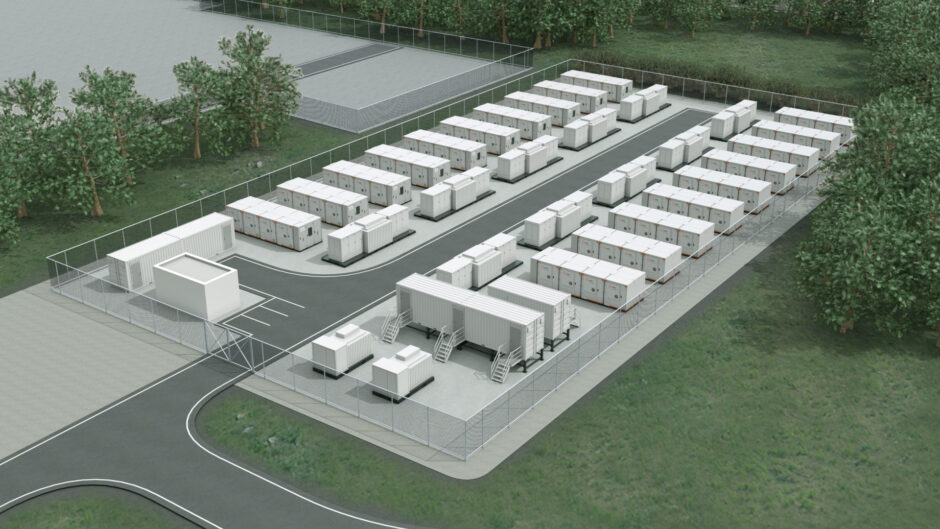 © Image: EDF Renewables UK
© Image: EDF Renewables UK EDF Renewables UK has been awarded planning approval for three new battery sites across the UK, amounting to more than 200MW of capacity.
The energy developer intends to build three schemes at sites in Kent, Norwich and Essex which it says will be instrumental in supporting the move to a decarbonised electricity system.
The first unit – a 57 MW/114 MWh lithium-ion facility in Braintree, Essex – is the latest project to receive planning approval, and is expected to begin construction in early 2024, with the aim of being operational in early 2025.
A further 114 MW/228 MWh site in Swainsthorpe, Norwich, was consented at the end of August and is expected to begin construction in early 2024.
And a 50MW/100 MWh battery facility near Sellindge, Kent, received consent in July.
All three schemes are co-located with nearby solar projects. EDF said investment in new technologies such as energy stoareg would help “maximise benefits” of renewables by storing surplus energy and enabling a more “resilient, stable and reliable” grid.
The UK has seen a surge in the volume of storage on the grid as developers look to capitalise on both price volatility and the constraints of the current grid systems. As of Q2 2023, total battery capacity in the UK reached up to 2.9 GW, and is forecast to hit 4GW by the end of the year.
Currently, EDF has two 50-MW battery facilities operational in Kemsley and Oxford, with two more sites in the West Midlands becoming operational this autumn, and a further two sites currently in construction.
The company intends to deliver up to 2GW of transmission-connected battery storage and high-volume power connections through its so-called “energy superhub” approach – sites which combine batteries and power infrastructure for EV charging.
Simone Sullivan, head of storage at EDF Renewables UK said: “The approval of our Sellindge, Norwich and Braintree battery storage facilities is an active proof point of the growing momentum behind battery storage and we are really pleased with the progress we’ve been able to make over the summer.
“We are taking an important step towards creating a smarter, cleaner and more resilient electricity system that will enable the transition to renewables that we need as we look to tackle the climate crisis.
“What we’re doing is not only providing the battery technology needed to improve grid flexibility but also co-locating it near our planned solar farms – breaking new ground to ensure a zero-carbon energy system for these regions.”
